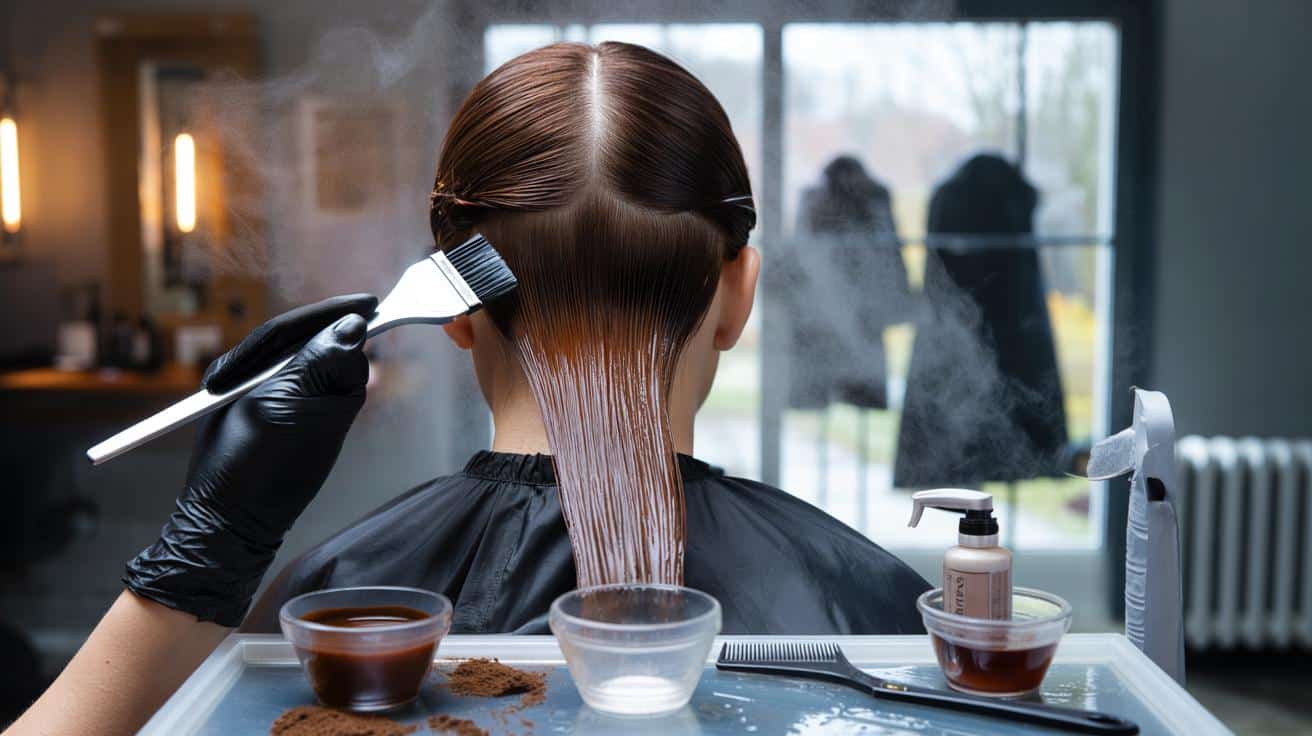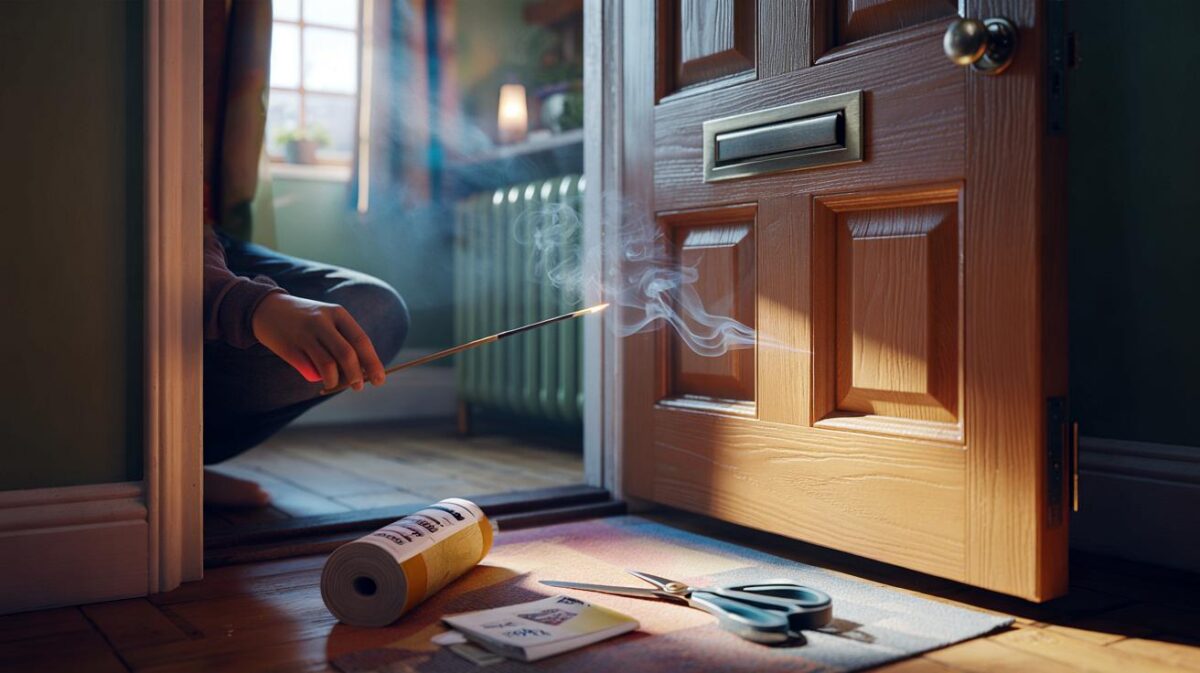Two hours later you leave with a pretty shade… and hair that suddenly snaps when you brush it a week on. The culprit isn’t what you think — and most stylists won’t spell it out.
I watched it happen on a grey Saturday in Hackney, steam rising from wet coats by the door and the radio hissing between ads. A stylist moved fast, mixing a fresh bowl while keeping the chat going, then swept colour beyond the roots like paint creeping past masking tape. We’ve all had that moment when you catch your reflection and something looks off: the tone feels flat, the ends feel thirsty, the shine’s gone before payday. The client smiled at the chair, then asked for a deep conditioner at the till the week after. The tone wasn’t the problem. The technique was.
The winter hair dye mistake stylists never admit
Here’s the move that wrecks winter hair: dragging permanent dye through mid-lengths and ends at every appointment, or letting root colour creep over “the line” into already coloured hair. It’s faster, it looks decisive, it keeps a chair turning, yet it quietly fries fragile fibres that are already parched from central heating and cold air. Each time peroxide hits those old lengths, it lifts, roughens and swells the cuticle again. **The real disaster isn’t the shade — it’s the overlap.** Under salon lights you get glass. Two washes later you get straw.
Ask Maddie, 34, from Bristol, who booked two root retouches last winter because her brunette felt dull. First visit, lovely. Second visit, she noticed faint bands: darker at the scalp, dusty in the middle, inky at the ends. By January, the front pieces started catching on her scarf and snapping at chin level. Several UK colourists told me their January diaries swell with “mystery dullness” and banding fixes. The pattern repeats: quick appointments with root formulas smudged a bit too far, permanent dye used to “freshen” the ends like they’re new fabric. They’re not.
The logic is simple once you see it. Permanent colour is designed to open the cuticle and change the core pigment inside the hair shaft. That’s perfect for virgin roots. Those mid-lengths and ends? Already processed, more porous, and hungry — they grab extra dye unevenly, drinking up cool tones and spitting back khaki or mud. Winter turns the screw: low humidity, radiators, wool friction and fewer natural oils mean the hair’s “sponge” is bone-dry and full of microscopic cracks. Add overlap and you get dullness, banding and breakage baked in by January light.
Stop the overlap: what to ask for and what to do
Ask for roots-only with permanent colour, then a separate demi-permanent or acidic gloss for the mid-lengths and ends. Two bowls, two approaches, one head. Request a porosity equaliser or bonder sprayed or combed through before the gloss hits the older hair. If your stylist suggests “pulling it through to refresh,” say you’d prefer gloss on the lengths and a cool rinse. **Roots get permanent; lengths get love.** It’s a small sentence that changes your winter.
Before you even sit in the chair, give your hair a fair shot. Do a gentle chelating wash 48 hours ahead if you’ve got hard water or dry shampoo build-up, then leave it alone so natural oils can buffer the scalp. Bring photos in natural light that show tone in the mid-lengths, not just the root shade. Layer a silk scarf under your wool one en route if you can — friction is a colour thief. Let’s be honest: nobody actually does that every day. Aim for “most weeks” and your hair will thank you by spring.
“Respect the line of demarcation,” one central London colourist told me. “Treat roots and lengths like different fabrics. You wouldn’t bleach a silk hem because the cotton collar was grubby.”
- Say clearly: “Permanent on roots only, please — gloss for the ends.”
- Ask for a porosity primer or bond builder on mid-lengths first.
- Set a timer for the gloss so it’s not left on “while we chat.”
- Request cool water rinse on lengths to calm the cuticle.
- Book a strand test if you’ve layered box dyes or seasonal highlights.
A winter mindset for colour that lasts
Winter is a test of discipline and tiny choices. It isn’t about a more expensive dye; it’s about respecting the inches that have lived through summer UV, festival braids, heat tools and last year’s fringe. *Winter doesn’t forgive shortcuts.* Ask for techniques that honour that history, even if they sound less “wow” in the salon mirror. Your February hair will look glossier, move better and hold tone longer.
Think of your colour like a favourite wool coat: you spot-treat the collar, steam the body, and hang it by a radiator with space to breathe. Same idea. Space out the drama, keep the fibre balanced, and let shine come from an intact surface, not just a fresh pigment hit. **Healthy colour is a winter strategy, not a lucky break.** Share this with the friend who keeps saying her brunette “goes muddy” by mid-January. She doesn’t need a new shade. She needs a new rule at the bowl.
| Point clé | Détail | Intérêt pour le lecteur |
|---|---|---|
| The hidden mistake | Overlapping permanent dye onto already coloured lengths | Prevents banding, dullness and breakage |
| The winter fix | Permanent on roots only + demi/acidic gloss on mid-lengths and ends | Keeps shine without over-processing fragile fibres |
| Smart habits | Chelate 48h before, porosity primer, cool rinse, microfibre towel | Longer-lasting colour and softer feel between appointments |
FAQ :
- Is demi-permanent colour really safer for my ends?Yes. It sits more on the surface, refines tone and adds shine without reopening the cuticle like permanent dye. That’s ideal for lengths that have already lived a little.
- Should I wash my hair before a winter colour appointment?Leave 24–48 hours after a gentle cleanse. Natural oils help buffer the scalp, while removing heavy build-up helps colour take evenly.
- How can I tell if overlap has happened?Look for faint horizontal bands in daylight, dull mid-lengths two washes after the appointment, or ends that feel grabby and tangle easily. A pro can “porosity-map” your hair to confirm.
- What if my stylist insists on pulling colour through?Ask for a gloss instead and mention you’re protecting your lengths in winter. If the pushback continues, it’s okay to try a colourist who offers roots-only plus gloss as standard.
- Can I fix muddy winter colour without a full correction?Often, yes. A targeted clarifying or chelating service, followed by a pH-balanced gloss, can lift the haze and restore tone without heavy processing.







